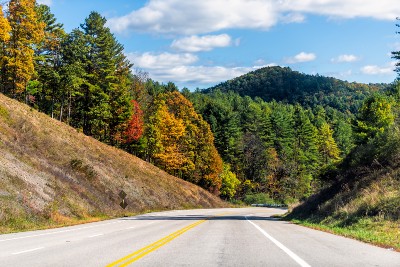
Legislation to establish a 92,000-acre Shenandoah Mountain National Scenic Area in Rockingham, Augusta, and Highland counties is being led by U.S. Sen. Tim Kaine.
Kaine (D-VA) was joined in introducing the legislation by Sen. Mark R. Warner (D-VA). National Scenic Areas are established by Congress to protect the scenic, historic, recreational and natural resources in specific areas, while allowing compatible uses such as outdoor recreation activities.
“These challenging past two years have underscored that getting out into nature is critical to our health and well-being,” said Kaine. “The establishment of this National Scenic Area will help us share the gifts of Shenandoah Mountain and the George Washington National Forest with visitors from near and far, while also boosting our local economies, protecting drinking water sources, and preserving the wildlife that make this area so special.”
“Virginia’s natural treasures provide free recreation opportunities for folks all around the commonwealth – all while creating jobs and supporting our local economies,” said Warner. “I’m proud to sponsor this legislation, which will help safeguard these treasures and ensure that Virginians can make the most of them for years to come.”
The SMNSA encompasses four Wilderness areas: Skidmore Fork, Little River, Ramsey’s Draft, and Lynn Hollow, which in sum include 10 peaks above 4,000 feet and 150 miles of trails to attract campers, hikers, mountain bikers, fishermen, birders, and equestrians. The legislation also establishes a 5,764 wilderness area at Beech Lick Knob, located 10 miles north of the SMNSA.
In addition to providing world class trails, the area includes headwaters for the Potomac and James Rivers and watershed that provide municipal drinking water sources for Harrisonburg, Staunton, and communities farther downstream. Cold mountain streams in the area are also a stronghold for native brook trout. Today’s legislation would permanently protect those rivers and streams from industrial development, and also help safeguard populations of at-risk species, such as the Cow Knob and Shenandoah Mountain Salamander, that are natural to the area.
In 2019, the tourism economy directly employed 5,365 people and generated $601 million in expenditures in Augusta, Rockingham, and Highland Counties, as well as Harrisonburg and Staunton. In addition to the direct benefits to tourism and other businesses, JMU scientists estimate that lands within the SMNSA proposal already generate $13.7 million per year in other local benefits, including the value of the water supply and energy savings. Designation of the SMNSA would further grow this value.
In addition to Staunton, Augusta, Rockingham, and Harrisonburg local governments, over 400 businesses and organizations have endorsed the designation. A full list of supporters is available here.
Full text of the legislation is available here.










